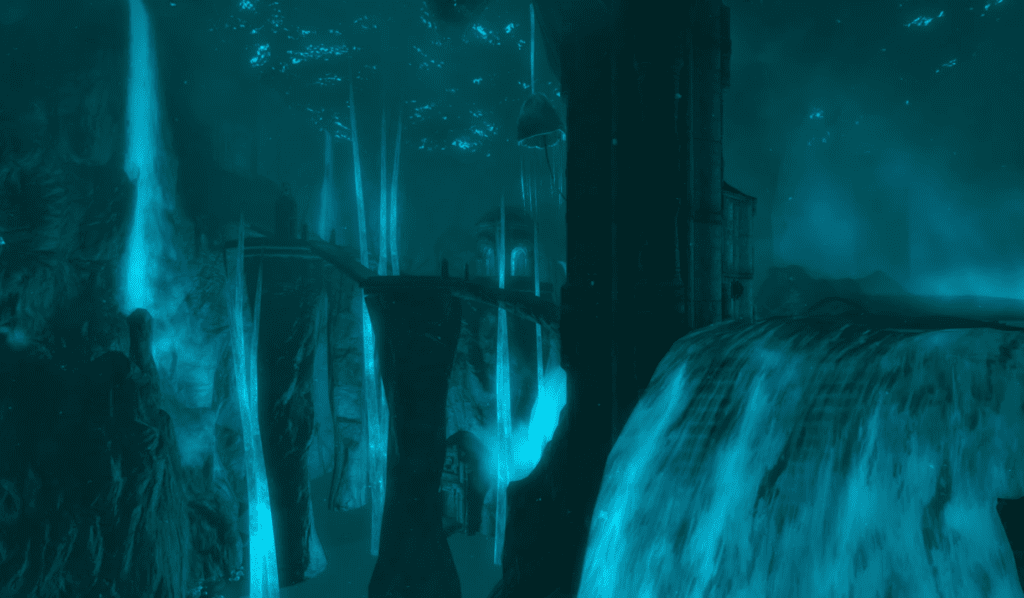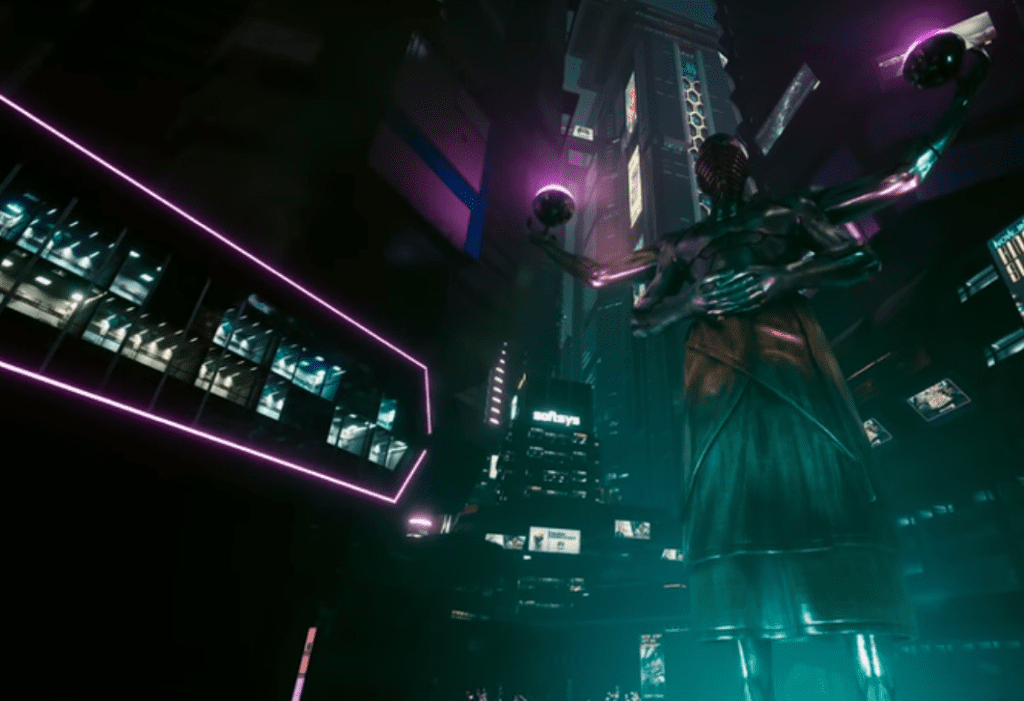For decades, the term “AAA games” (or “triple-A games”) has been thrown around in the gaming industry, causing confusion and intrigue for new and veteran gamers alike.
One thing is certain, though: as the biggest players in the market, they are the non-mobile driving force behind the rapid growth the gaming industry has seen over the past 10 years, which is set to reach almost $270 billion in value by 2025.
If you enjoy playing video games, having a good grasp of the world of AAA games is essential for staying up-to-date with the latest trends and developments in the industry.
But what exactly makes a game AAA? What’s the secret sauce behind their success? That is precisely what we’re going to explore in this article. We will also explain some of the traits these games share, and we’ll give three fantastic examples of AAA games to top it off.
What makes a game AAA? What even are AAA games?
While there is no clear definition of what makes a AAA game, we use the term to describe games with massive budgets (often ranging in the tens of millions), with around half being used solely on marketing efforts.
These games are often well-polished experiences, with deep and expansive content spanning multiple areas within the title. Many AAA series have so much side and post-game content that even the most dedicated gamers could spend a hundred hours without seeing all the game has to offer.

Another thing that sets AAA games apart is their development time. While most games available on the market take around 2 years to develop, AAA games usually require 4 to 5 years before everything is ready for release, with some titles requiring twice as much.
Finally, AAA games are known to have the biggest and most prestigious studios behind them. Creating such complex worlds and visually impressive games wouldn’t be possible without a massive team of experienced professionals. For instance, Ubisoft claimed to have anywhere from 400 to 600 employees working on their most complex projects back in 2014, and this figure is likely higher today.
So what does it take for a game to be considered an industry-leading (AAA) title? In short, having hundreds of people working on them and astronomically large budgets is all you need.
Other traits of AAA games
That said, these games often share many traits. Let’s dive into some of those, shall we?
- Cutting-edge technology: the biggest game development studios often push the boundaries of what’s possible with the latest hardware and software improvements, using them to create increasingly more immersive and realistic worlds for players to explore. These advancements are often seen in their AI, physics, graphics, and their in-house game engines, causing a lasting impression on the world with every coming generation;
- High production value: AAA games usually come bundled with extremely high-quality graphics and animations, professional voice acting, sound design, and other elements the players will interact with during gameplay. For example, CD Projekt Red (CDPR), the Polish gaming studio behind Cyberpunk 2077’s development, got Keanu Reeves to voice one of the most important characters in the game – and his performance was nothing short of breathtaking. They also got real city planners and architects to work on Night City, which looks as bustling as a cyberpunk city downtown would;
- Complex and deep worldbuilding: as mentioned before, many AAA games have fully developed worlds that the player can explore and learn more about through in-game texts. The Elder Scrolls V: Skyrim is a 2011 game that showcases just how deep worldbuilding can get, having hundreds of in-game books for the player to learn more about all the different races, civilizations, and creatures of Skyrim;
- There’s something for everyone: AAA titles are massive in length and depth. No matter what kind of player you are, chances are the game’s always got a promise for you. It might be hidden, or behind significant progress, but it’s there… just around the corner. Achievements? Yeah, they got you covered. Collectibles scattered across the map? Yep! Funny or obscure easter eggs? Yes, that too! Do you enjoy lore? Many adventure/RPG games will have plenty of in-game texts to quench your thirst;
- You will hear about them: even if you’re not into gaming, their marketing efforts will reach you one way or another. AAA game advertising is so critical for their success that the companies behind them often invest around half of their budget in marketing alone – with the other half going into development.
- With high expenses, come high costs: AAA games are infamous for being expensive – notoriously so for people living in poorer regions, such as Latin America, where a single title could compromise over a fifth of the minimum monthly wage. The price tag for these games is usually $60, but some companies, like Ubisoft, raised the bar even higher, making them cost $70 (unsurprisingly, this attracted a lot of vitriol on social media);
3 fantastic examples of AAA games
Final Fantasy VII (1997)

Considered by many to be the first AAA game ever, FF7 was developed by Square (later Square Enix) and released in 1997 for the Sony PlayStation platform. In this game, players control a party of characters as they explore a vast world filled with enemies, puzzles, and riches to find.
They can customize their characters with a variety of weapons, armor, and magic spells, cleverly using them to take on enemies in engaging turn-based fights, a staple mechanic of JRPGs. Furthermore, its gameplay is intuitive and accessible, but it offers plenty of depth and complexity for players looking to create the most powerful characters.
One of the key factors that made FF7 a AAA title was its gigantic production value, with a development budget estimated at around $42 million (equivalent to $78.3 million in 2023) and a staff comprising over 100 professionals at a time when the biggest development teams had around 20 members.
Square also heavily invested in marketing to build hype and anticipation before the game’s release, with advertisements being published in magazines and promoted at gaming conventions all over the place. They went as far as creating a series of TV commercials to ensure maximum reach for their marketing efforts. And it worked!
The Elder Scrolls V: Skyrim (2011)

Developed by Bethesda Game Studios, Skyrim had a massive development budget and team. It extensively used proprietary cutting-edge technologies, allowing them to implement high-quality graphics, realistic character animations, and even a dynamic weather system, which helped cement Skyrim’s place as one of the most beloved AAA titles of all time.
In this action RPG game, players take on the role of a Dragonborn (also known as a Dovahkiin), someone who is capable of defeating and absorbing the souls of terrifying dragons. Set in a vast, beautifully crafted open world and with many dungeons, ruins, and hideouts to loot and explore, Skyrim’s open-ended nature allows players to progress as quickly as they please – or get carried away in an unending chain of side quests and fights – which was paramount for its success.
Believe it or not, Skyrim is one of those games that just keep on giving. Like Minecraft, their modding community has been critical to keeping the game alive and relevant for so many years. With thousands of mods to pick and choose at your disposal, each playthrough can be wildly different from another.
EnaiSiaion’s collection of mods, for example, can add hundreds of new spells to destroy your enemies with, and significantly alter the game’s skill trees, enabling builds that were once impossible – what about casting expert-level spells by shooting arrows into your enemies’ knees for free?
Cyberpunk 2077 (2020)

Created by CDPR, Cyberpunk 2077 is a game that spent almost a decade in development hell. In spite of its many delays, it was one of the most anticipated games of 2020, so much so that the studio managed to recoup its around $320 million development and marketing costs in pre-order sales alone.
Once more, Cyberpunk 2077’s insanely high production value did show itself: the game boasted pretty graphics, a deep character customization system, and a complex branching storyline with multiple endings and memorable characters. The map’s open-world design, the city’s gorgeous brutalist architecture, and all those elements common in cyberpunk movies, really helped set the game apart from the competition.
Even though the game was plagued with funny and frustrating bugs alike due to QA testing mishaps, they managed to turn the situation around through a series of patches and updates, which not only fixed them but also brought some much-needed features to the game. Furthermore, this AAA title stole the headlines once again in 2022 with the release of Cyberpunk: Edgerunners on Netflix, rekindling its popularity flames once more. As the game’s modding community work on twisting the game around itself, it definitely has the potential to become this decade’s Skyrim, but only time will tell.
What about indie games? Can they be a AAA game?
Also known as independent games, they are the works of smaller development teams, who often have to juggle their limited resources and be well-versed in many areas of game development, like creating game assets, programming, and even marketing. In some cases, they can even be the product of many years of work by a single person, like the universally-acclaimed Stardew Valley.
Indeed, creating a true AAA game as an indie developer is a nigh impossible task given the limited resources and team members at their disposal. However, some projects are so impressive that they can rival the quality and scale of AAA games – the so-called “III” games.
For instance, the undisputed success of games like Hollow Knight, Ori and the Blind Forest, The Witness, and Celeste demonstrates that it’s possible to create remarkable experiences with smaller teams and budgets.

Deciphering the Traits of AAA Game Development
The classification of AAA games encompasses a diverse range of characteristics and attributes. These games are typically associated with high budgets, large-scale development teams, and extensive marketing campaigns. They often prioritize cutting-edge 3D graphics and showcase a commitment to delivering top-tier quality. Iconic franchises like Grand Theft Auto (GTA), Call of Duty, and the EA Sports series exemplify the AAA gaming sector. These games are not only high-profile but also innovative in terms of gameplay mechanics and game design.
AAA games frequently enjoy massive marketing budgets to promote their releases, ensuring they reach a wide audience. They are commonly developed for console platforms like Xbox and PlayStation, with versions optimized for the latest generation of consoles, such as Xbox Series X and PlayStation 5 (PS5). The development cost of AAA titles is notably high due to the need for top-notch graphics, intricate game mechanics, and extensive quality assurance processes.
While the term “AAA” is commonly associated with the console gaming industry, it has evolved to include other platforms like PC and mobile gaming. Notably, some indie game developers have also made forays into the AAA space, either by partnering with major publishers or securing substantial budgets for their projects.
In today’s gaming landscape, the classification of a game as AAA transcends traditional boundaries and is more about the quality, impact, and production values. AAA games continue to be a dominant force in the gaming industry, shaping the experiences of millions of players worldwide.
Wrapping it up
In conclusion, AAA games are a highly competitive segment of the video game industry. While there is consensus on what constitutes an AAA game, these titles are typically associated with massive teams, equally huge budgets, the use of cutting-edge technology, and high production value.
The success of games like FF7, Skyrim, and Cyberpunk 2077 showcases their immense profit potential, while indie games like Hollow Knight and Celeste have proven that it’s possible to create experiences akin to what AAA games provide with smaller teams and budgets.
Ultimately, the video game industry will continue to evolve year after year, and experts might one day settle on one true, universally-accepted definition of an AAA game. We wouldn’t count on that, but the core principles of immense budgets and large teams will remain as two of their key traits.
After playing all these games, you might have ideas of your own – but you might not have the time or the dedication to create a fully-fledged game from the ground up. But fear not, because we are here to help you out!
At Main Leaf, we are committed to providing the most delightful gaming experiences on demand. Our 70+ passionate professionals have the expertise and knowledge to design and create phenomenal games for players of all ages and interests.
Well-versed in both Unity and Unreal game engines, our team has everything it needs to bring your ideas to life: from concept art and design to programming and QA, we handle everything involved in the game development process, ensuring that every aspect is thoroughly polished and well-executed.
Contact us today and request a game quote to start bringing your vision to life!

